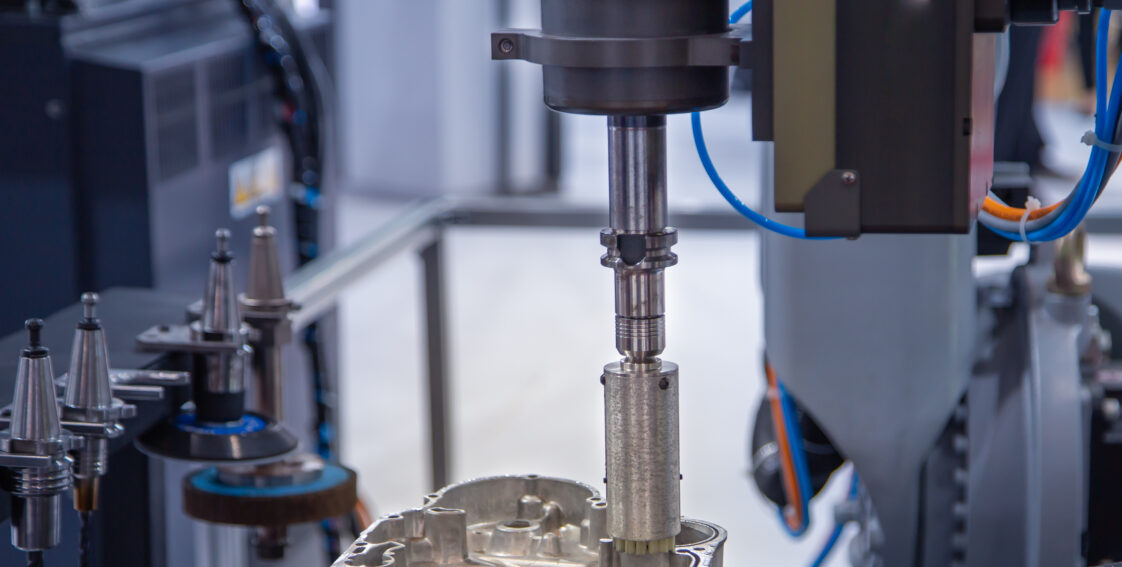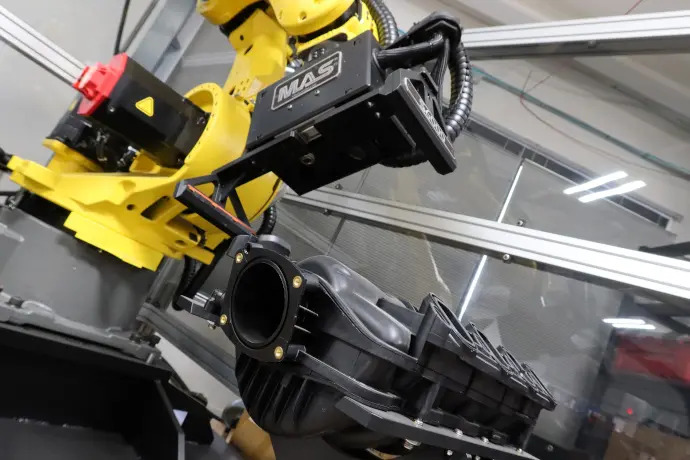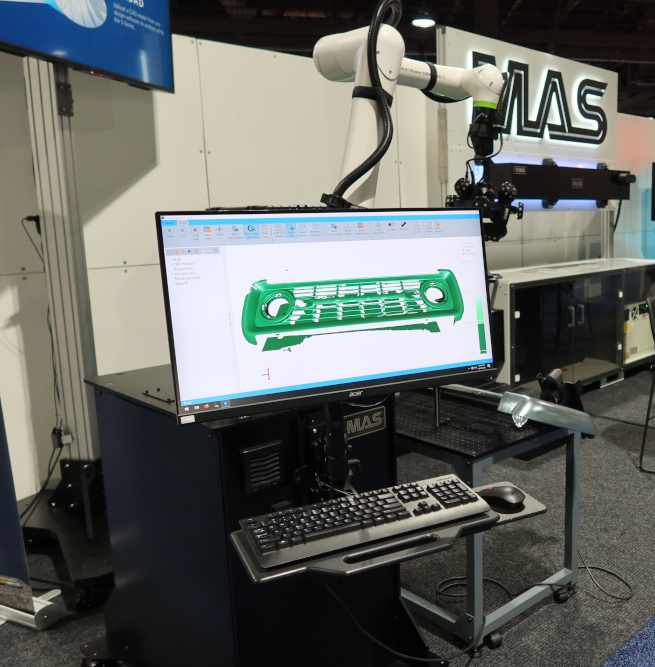
What Is Adaptive Robotic Path Planning & How Can It Solve Your Manufacturing Headaches?
Imagine a world where robots can adapt to the unique characteristics of each part they work on——performing work correctly on every unique part and eliminating the need for manual processing or rework. This is the concept of adaptive robotic path planning.
In layman’s terms, adaptive pathing allows a robot to modify its path based on measurement data, accounting for variations in a part’s shape. It’s an innovative approach that transforms manual processes into automated ones, reducing scrap and defects before they occur.
Let’s dive deeper into adaptive path planning and explore its immense potential in modern manufacturing.
HOW ADAPTIVE ROBOTIC PATH PLANNING WORKS

The adaptive inline process begins with the system taking a 3D scan of each part and analyzing the scan for defects or dimensional non-conformances. Next, instead of simply disposing of the defective parts, the adaptive robotic path planning system uses measurement data to adjust the robot’s path in real time, allowing it to correct any detected issues or to perform post-processing of the part.
Adaptive pathing is a game-changer for manufacturers. Before adaptive inline processing, factories performed metrology offline, which involved taking random components off the production line and measuring them in a separate area.
Now, with adaptive inline inspection systems, measurements are conducted directly on the production line and are fully integrated into the manufacturing process in a closed feedback loop, saving time and labor while providing more data on each part. Defects are detected and fixed before the final QA process, ensuring high-quality parts are produced every time.
COMMON APPLICATIONS
There is a wide range of applications for adaptive robotic pathing, including:
- Flashline Material Removal
- Dispensing
- Finishing & Sanding
- Deburring
- Welding & Soldering
- Inspection & Quality Control
- Surface Coating & Painting
- Assembly & Pick-&-Place
ADAPTIVE PATHING VERSUS TRADITIONAL ROBOTS
When it comes to quality assurance in manufacturing, there’s a distinct difference between using adaptive pathing and traditional industrial robots. Let’s explore these differences and see how each method impacts the QA process.
TRADITIONAL ROBOTIC METHOD
In traditional QA processes, industrial robots follow a fixed path while performing tasks, such as flash trimming, meaning the robot carries out the operation without considering any variations in part dimensions.
As a result, around 20% of parts could still have flash remaining due to dimensional discrepancies. To address this issue, a human inspector checks each part after the robot’s work is complete and manually reworks those that still have issues.
This method relies heavily on the repeatability of the robot but lacks flexibility, leading to potential defects and inefficiencies in the process.
ADAPTIVE PATHING METHOD
Unlike traditional robots, adaptive pathing typically leverages an integrated metrology system and uses measurement data to adapt the robot’s path based on requirements, specifications, and detected defects.
In our flash trimming example, the percentage of parts with remaining flash drops significantly, almost to 0%, eliminating the need for manual rework. The robot can even inspect the part afterward to ensure the task was completed correctly.
BENEFITS OF ADAPTIVE PATHING
As a manufacturer, you can face many different challenges in your day-to-day operations.

Some of these challenges may include:
- Integration: Automation is needed to stay competitive, but it can be difficult to overcome the technology barrier.
- High Turnover: There is a high turnover rate for manual operators because many people are unwilling to perform dirty and difficult tasks. This makes it harder for manufacturers to maintain consistent quality and productivity.
Thankfully, adaptive pathing offers a solution to these challenges by offering:
- Real-Time Measurements: Adaptive pathing allows you to measure parts in real time, providing valuable data that can be used to improve your production processes.
- Adaptable to Different Shapes & Sizes: As manufacturing processes evolve and adapt, so do the parts being created. Adaptive pathing allows for seamless adjustments in response to these changes, ensuring production remains smooth and well-coordinated.
- Improved Process Control & Quality Assurance: Adaptive pathing can give you better control over your processes, leading to better quality assurance, fewer defects, and a more consistent final product.
- Fully Automated Process: By using measurement data to guide the manufacturing process, adaptive pathing allows operations to be automated in ways that were previously impossible.
- Less Manual Labor: With adaptive pathing, manufacturers can automate tasks that are traditionally labor-intensive and time-consuming. This not only frees up resources but also reduces the risk of human error and ensures a smoother production process.
- Less Scrap Materials & Reworking: The precision and adaptability of adaptive pathing minimize the need for rework and reduce the amount of scrap material generated during the manufacturing process.
MAS’S ADAPTIVE PATHING SOLUTION
Scan-to-Path™ is an advanced add-on to MAS’s QC Plus™ Core software that enables adaptive pathing based on 3D scans of your products. It connects robot(s) and various 3D scanners or cameras, allowing them to acquire detailed 2D and 3D information about each object. This data is then meticulously analyzed by the software. With Scan-to-Path™, the robot’s motion path is automatically corrected to adapt to any discrepancies found in the parts, enhancing overall production quality.
FIND SOLUTIONS TO YOUR MANUFACTURING HEADACHES WITH HELP FROM MAS
MAS manufactures customizable automated metrology systems for customers in many industries, including aerospace and defense, automotive, and medical.
Many of our automated systems include Scan-to-Path™, our adaptive pathing solution. Scan-to-Path™ can help you reduce defects, improve production repeatability, and enhance product quality. We’re committed to helping you find the most cost-effective solutions to your manufacturing challenges. If you have questions about adaptive pathing/Scan-to-Path™ or want to learn more about our automated systems, please contact us today to schedule a discovery meeting.
